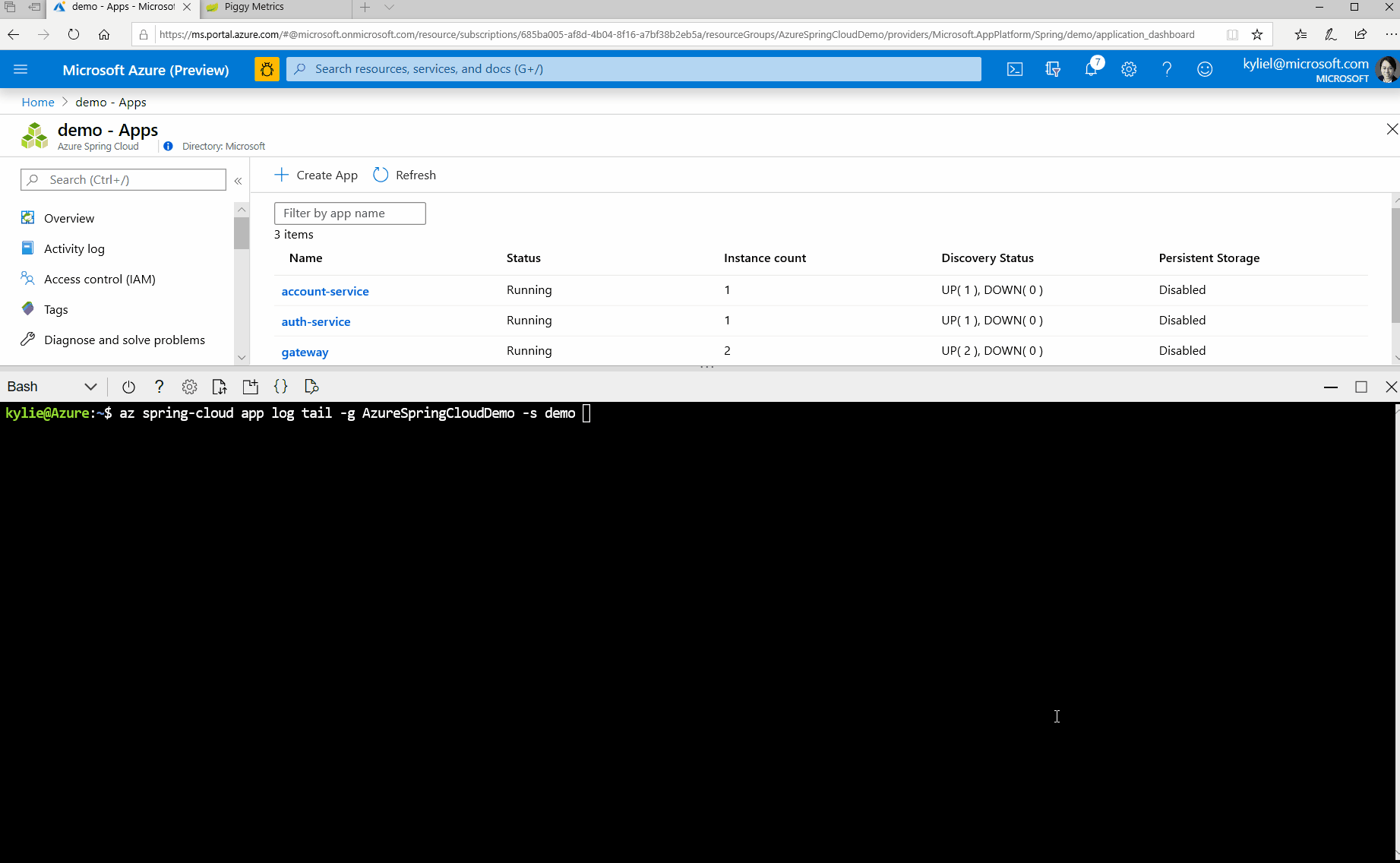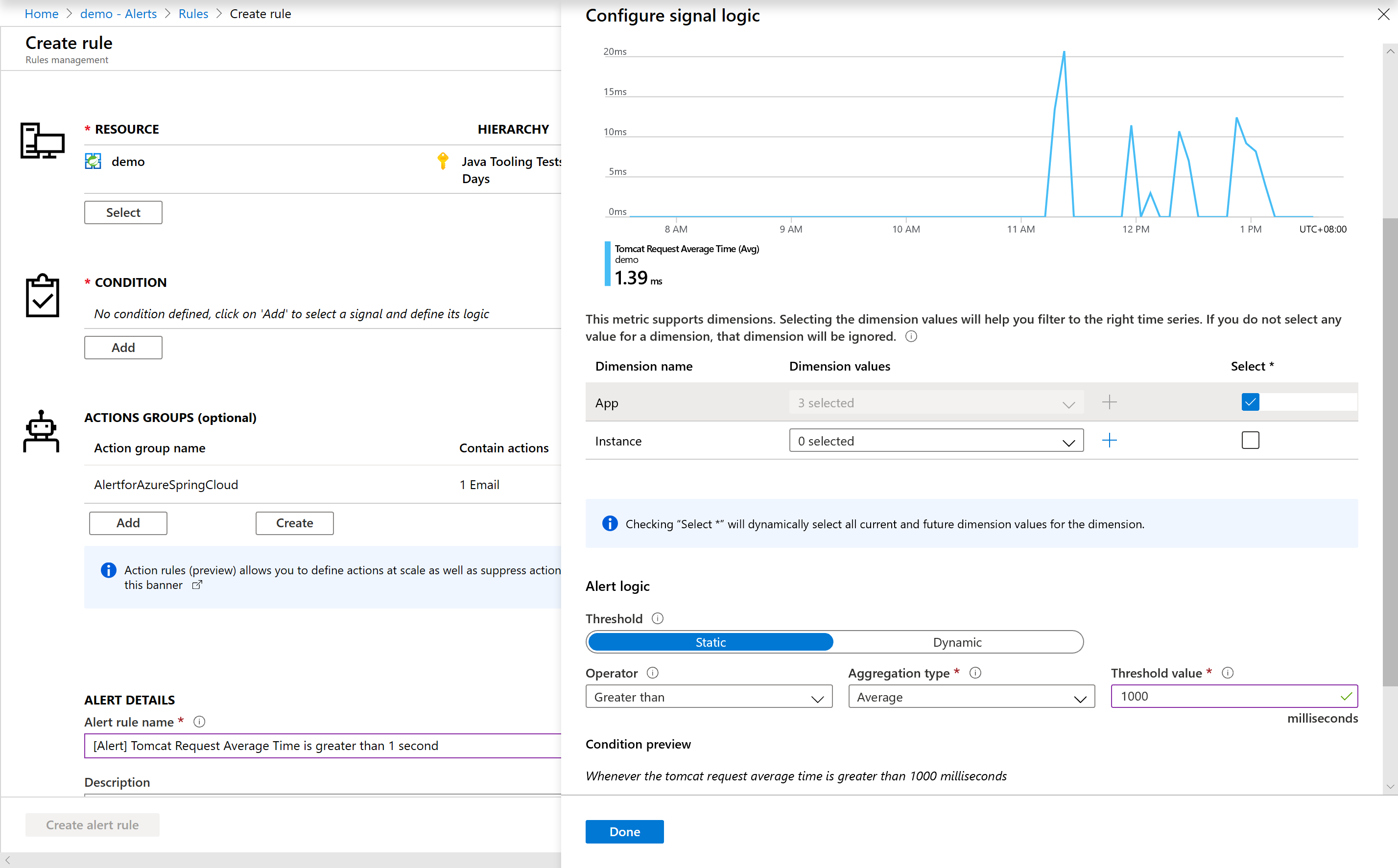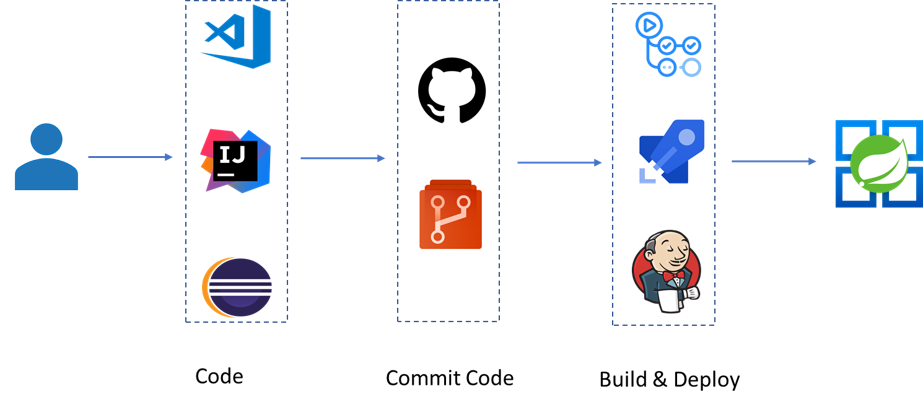What’s New in Azure Spring Cloud – January Update
Microsoft and Pivotal co-announced Azure Spring Cloud private preview during the SpringOne Platform keynote and then public preview at Ignite in November 2019. It is a fully managed service jointly built, operated, and supported by Pivotal and Microsoft to simplify spring boot based microservices development and management. We are excited about the high level of interest the solution has seen and would like to thank all our preview customers for the feedback you’ve given so far. We are committed to making Microsoft Azure an excellent cloud for Java workloads, we continue to deliver more per customers’ requests and feedback. In this blog, I’ll share the newest features on diagnostics and enhancements on tooling from the January release of Azure Spring Cloud.
Log Streaming
In Azure Spring Cloud, Spring developers can enable Log Analytics to view or query logs. The log streaming feature allows developers to get real-time application logs in Azure CLI and know what’s happening with specified application instance running in Azure Spring Cloud. Below is an example and you can get more details here.
$ az spring-cloud app log tail -g AzureSpringCloudDemo -s demo -n gateway
If you have multiple app instances, you will get the names of those app instances after running above command line. Then you can use ‘–instance/-i” to specify which app instance you want to view.
$ az spring-cloud app log tail -g AzureSpringCloudDemo -s demo -n gateway Command group 'spring-cloud' is in preview. It may be changed/removed in a future release. Multiple app instances found: gateway-default-7-7cc48cffbc-4kz56 gateway-default-7-7cc48cffbc-jwvb2 Please use '-i/--instance' parameter to specify the instance name $ az spring-cloud app log tail -g AzureSpringCloudDemo -s demo -n gateway -i gateway-default-7-7cc48cffbc-jwvb2

Alerts
You can now use the metrics generated by your apps to trigger alerts. When configured, metrics are evaluated at regular intervals to check if conditions for one or more metric time-series are TRUE. If a condition is TRUE, you will be notified.
To set this up in Azure Spring Cloud, you:
- Define a metric alert rule by specifying a target app or app instance and choose the desired metric to alert on.
- Set the condition for that metric.
- Create an action group to be triggered when the alert rule fires.
Below is an example:
- Metric: Tomcat Request Average Time
- Condition: Greater than 1000 milliseconds
- Action: Email

To learn more about setting up Alerts, check out the documentation here.
CI/CD
Azure Spring Cloud supports both Jar artifacts and source code. If you want to automate the build and/or deployment, you can follow the guidance to set up a pipeline with the power of Azure CLI to deploy your changes automatically to Azure Spring Cloud.
Github Actions / Azure DevOps / Jenkins

We hope you are as excited as we are about these new features. Your feedback has been instrumental in deciding which features to focus on delivering. Please keep the feedback coming.
We will continue to enhancing the Azure Spring Cloud product as we move towards General Availability in the coming months.
If you encounter any issues with Azure Spring Cloud, please create an Azure Support Request. Our customer support team are standbying to respond your issues ASAP.

 Light
Light Dark
Dark
0 comments